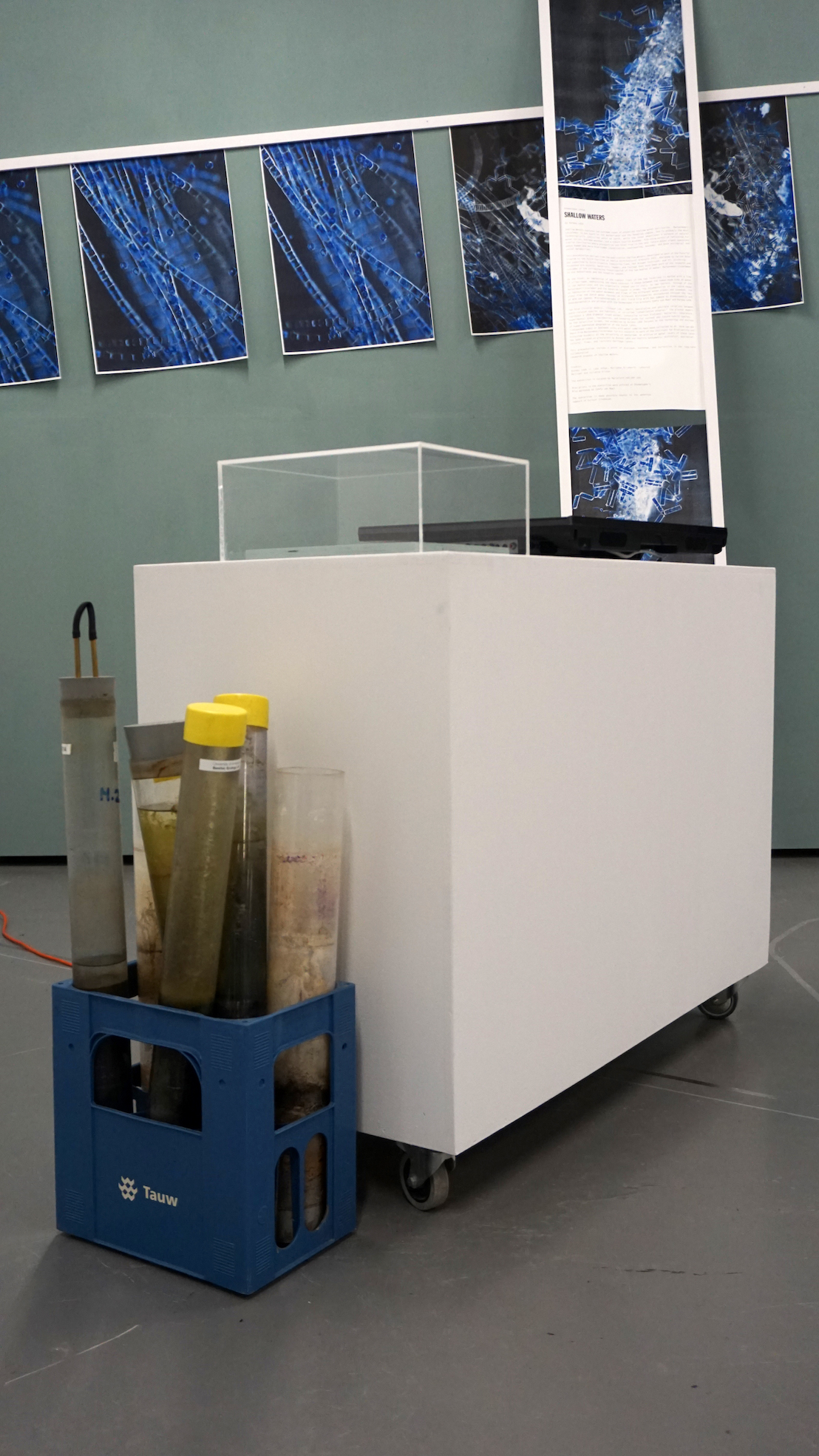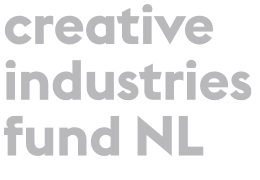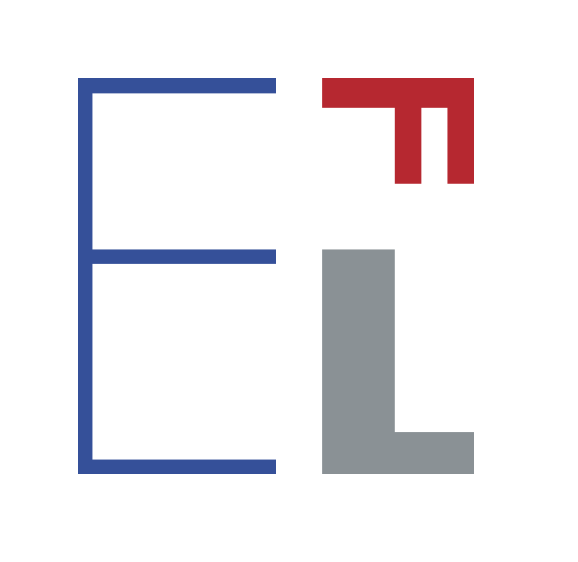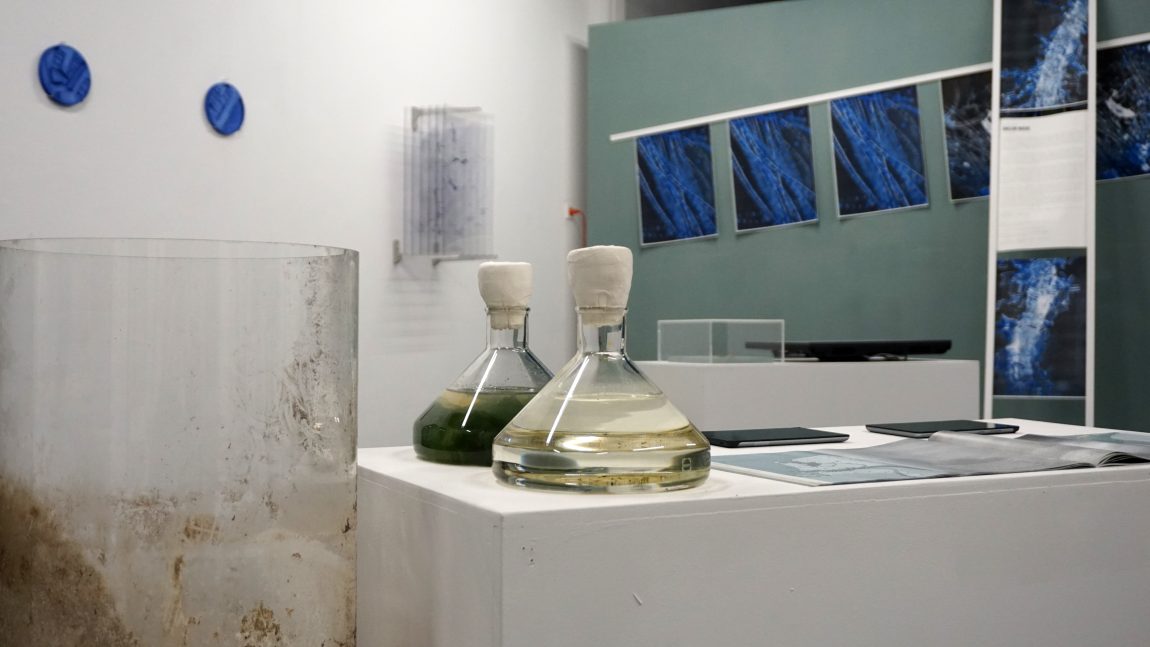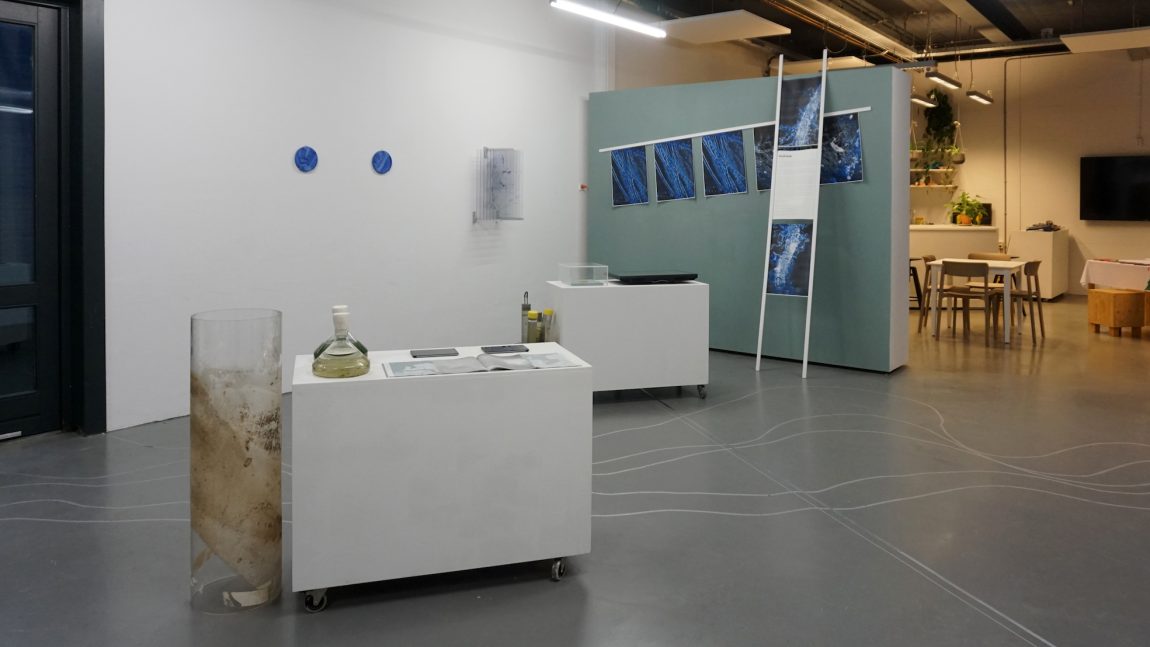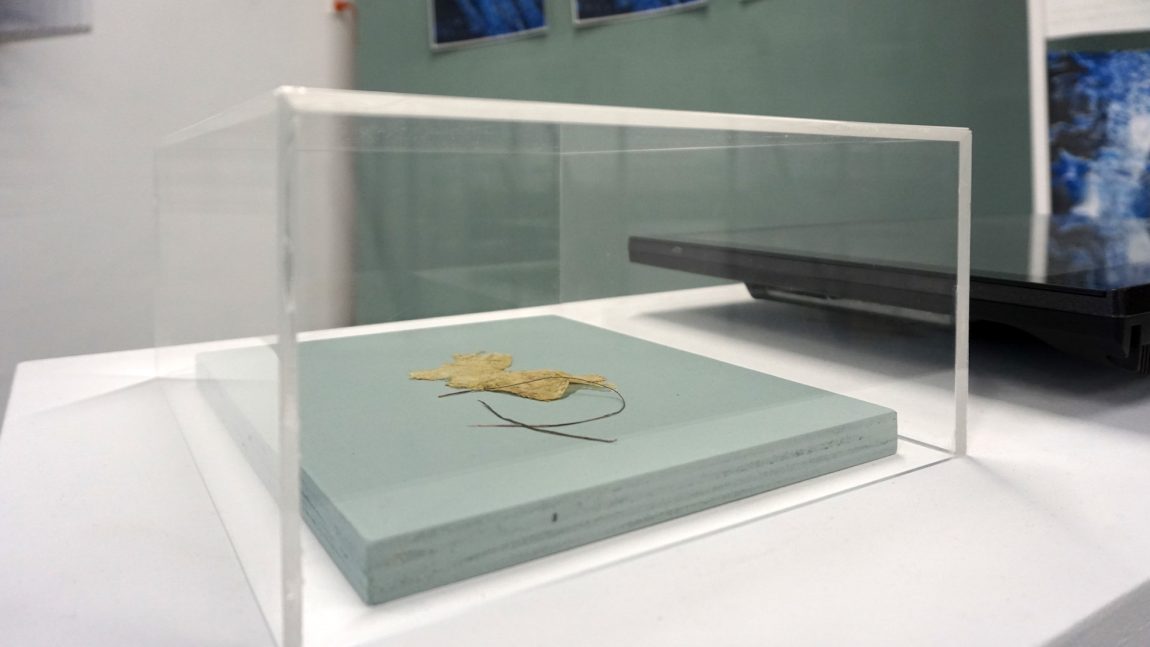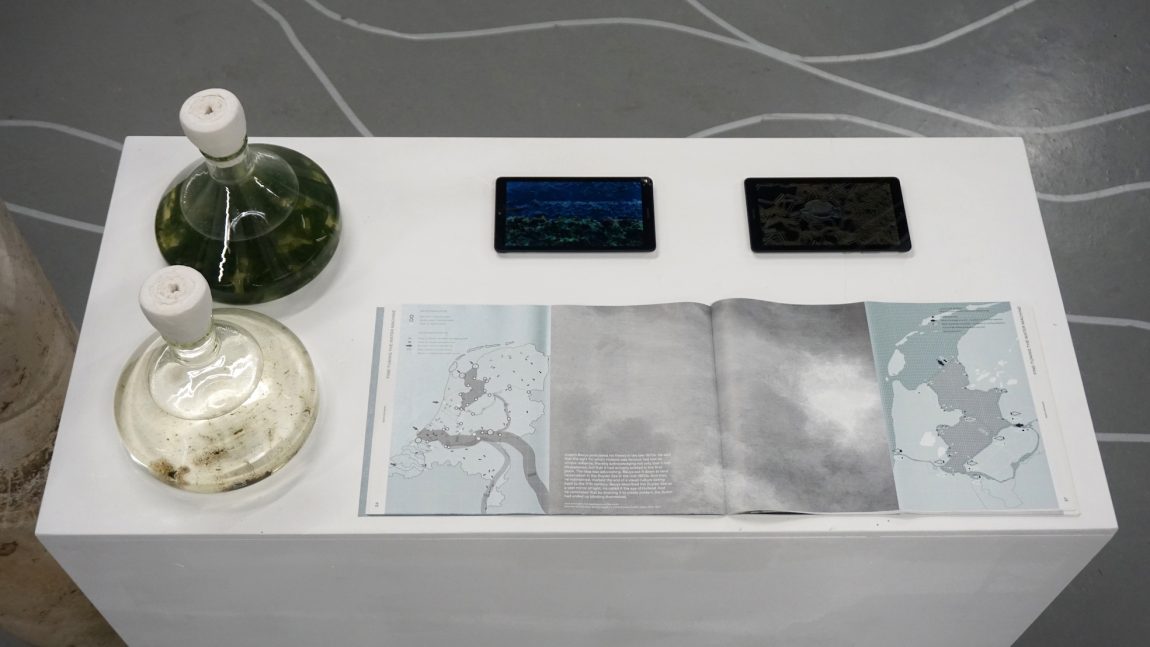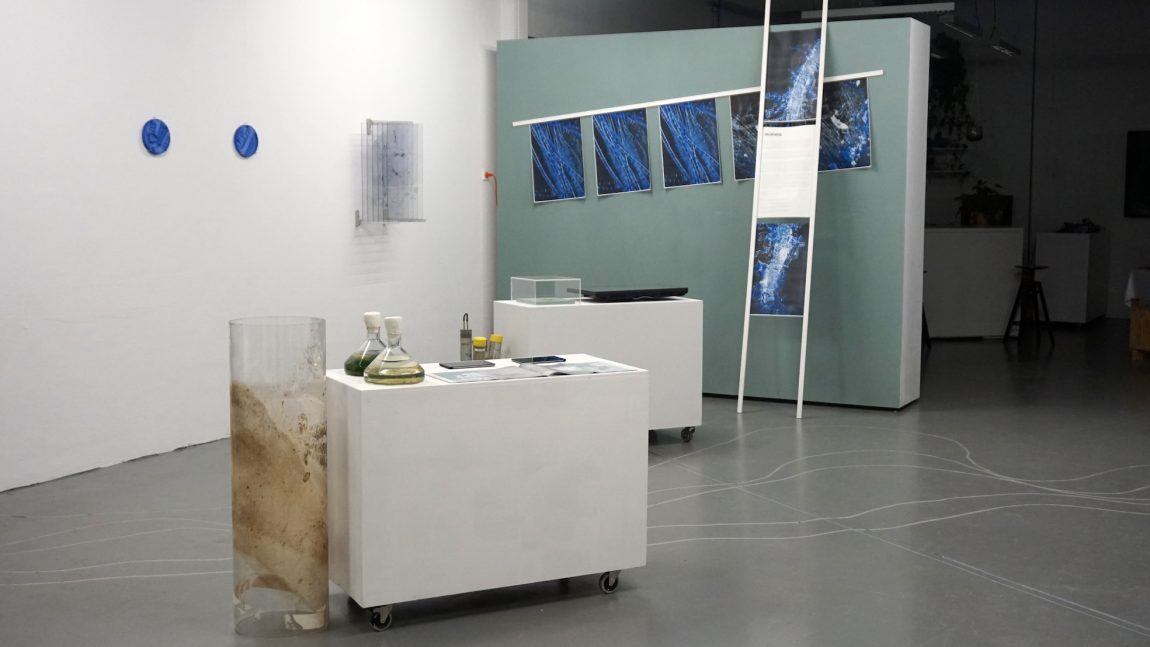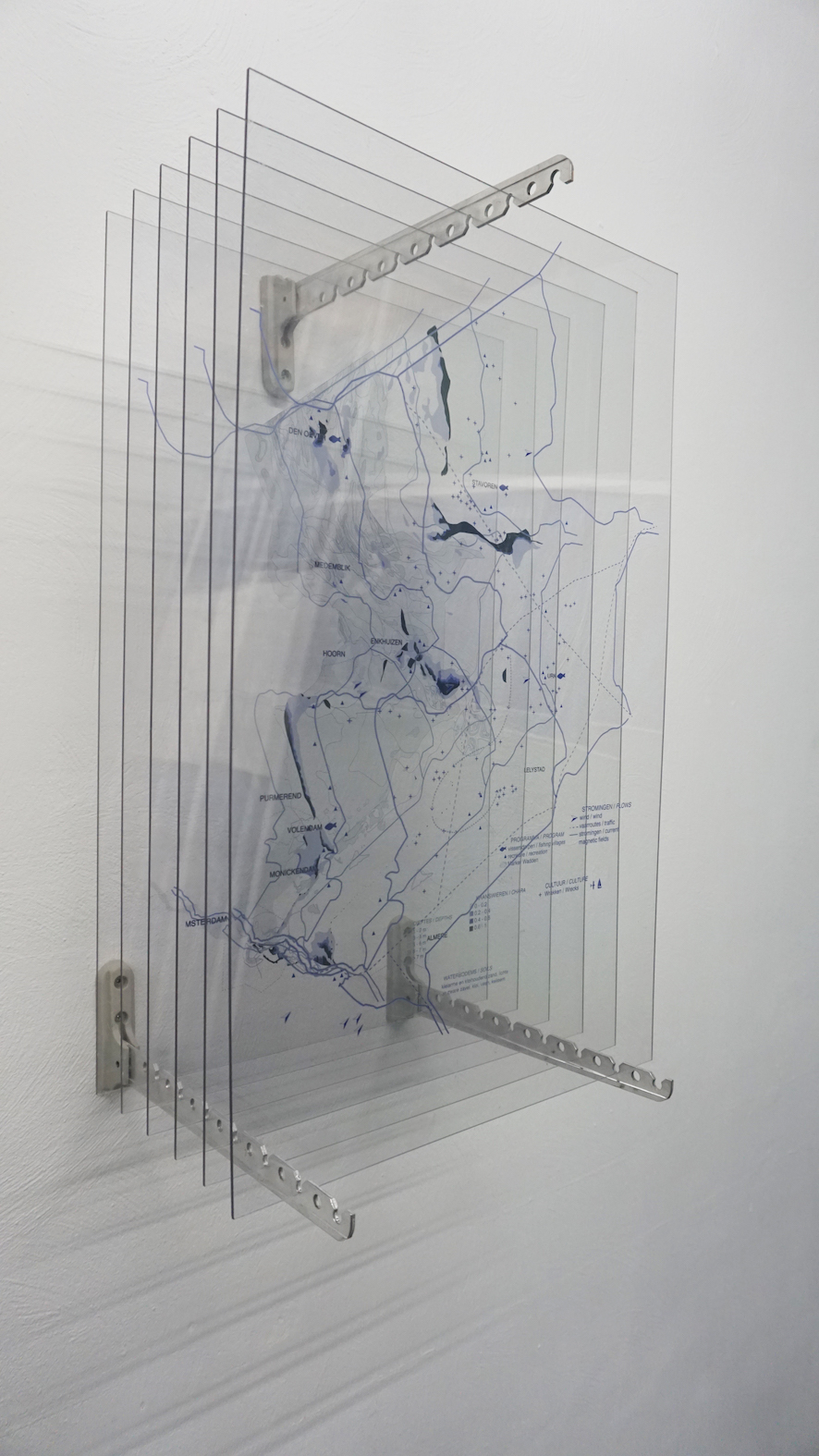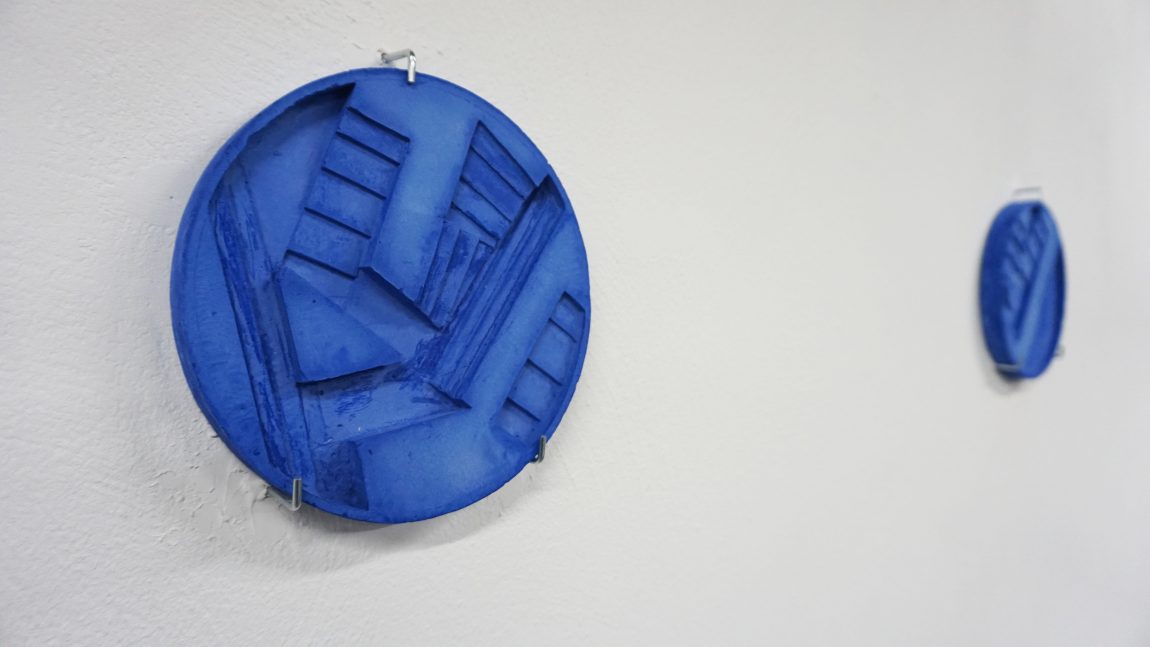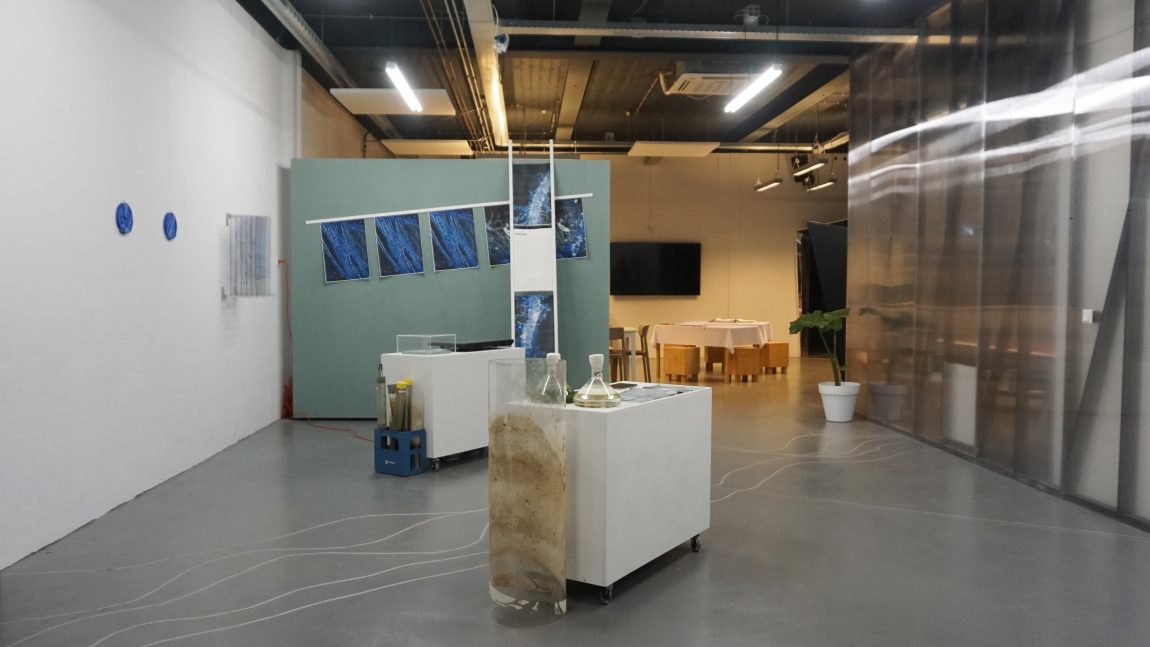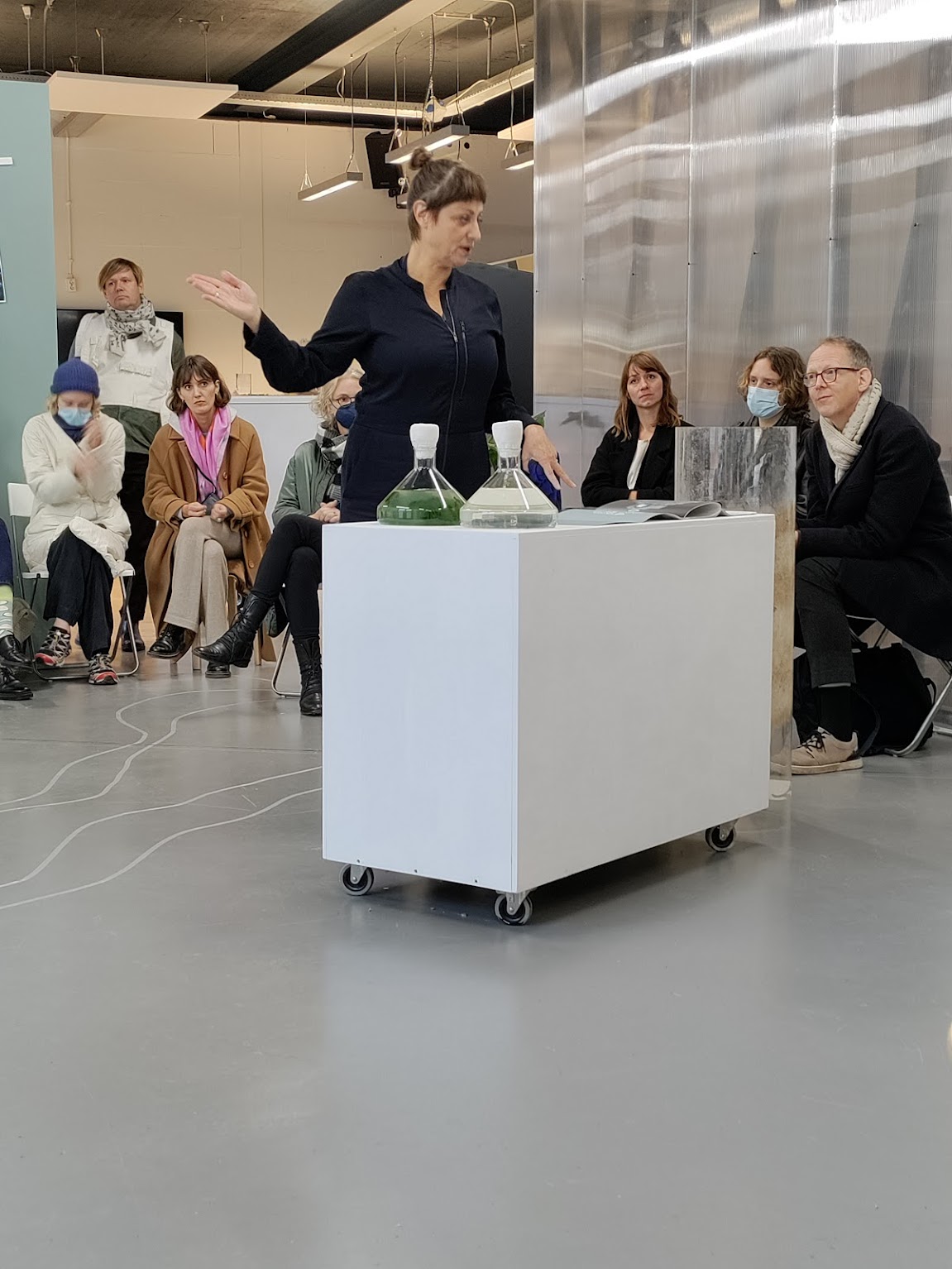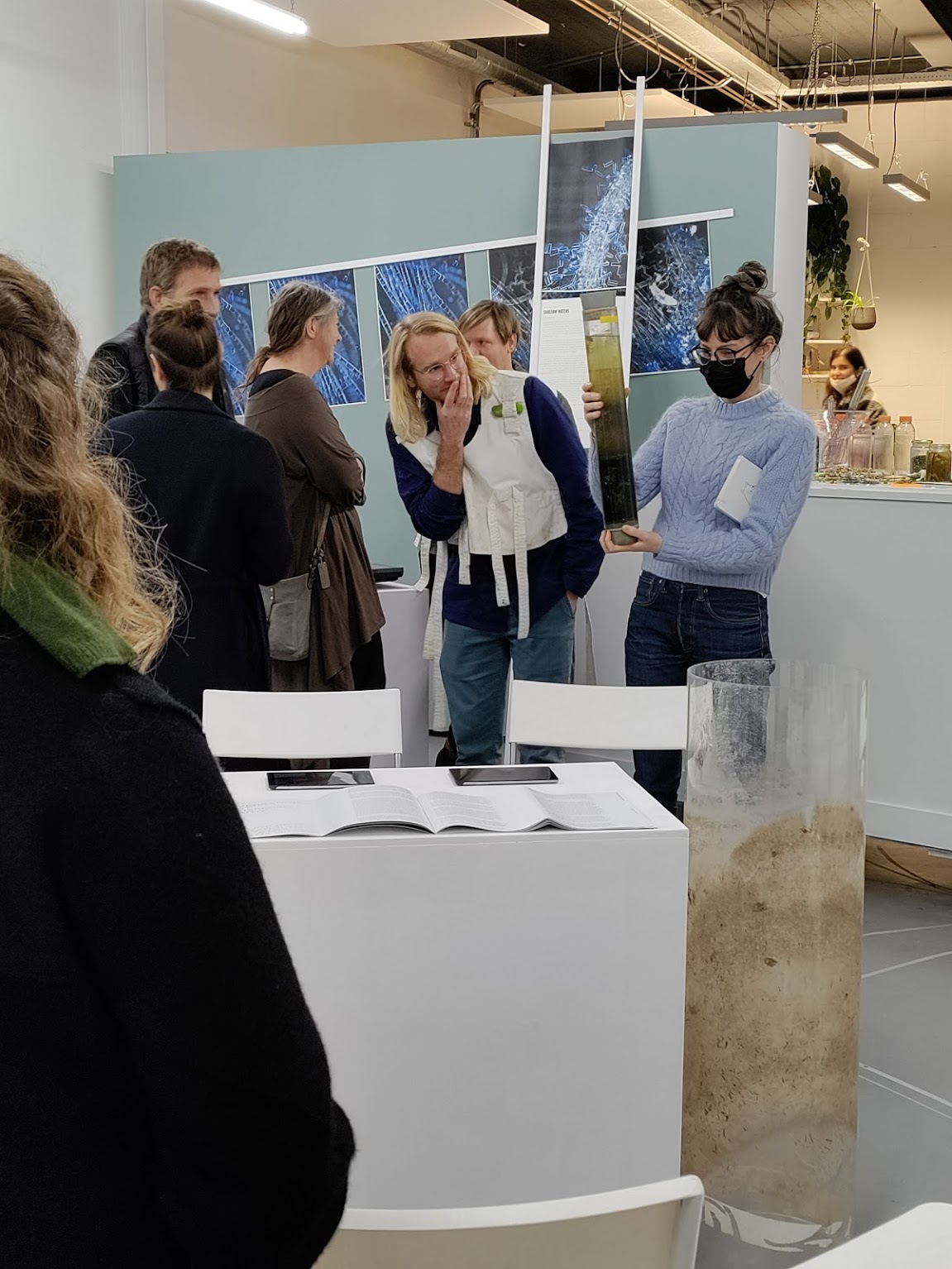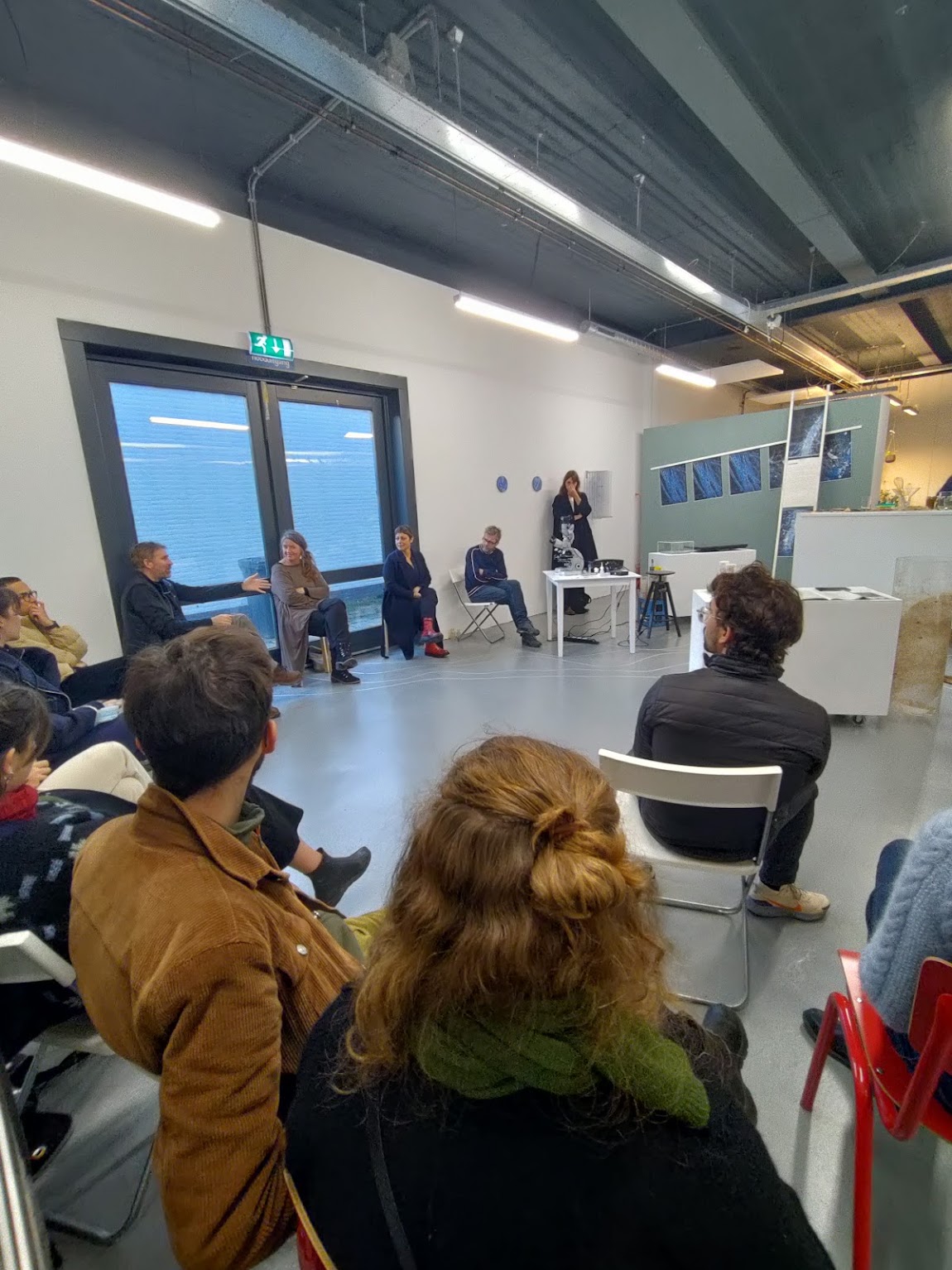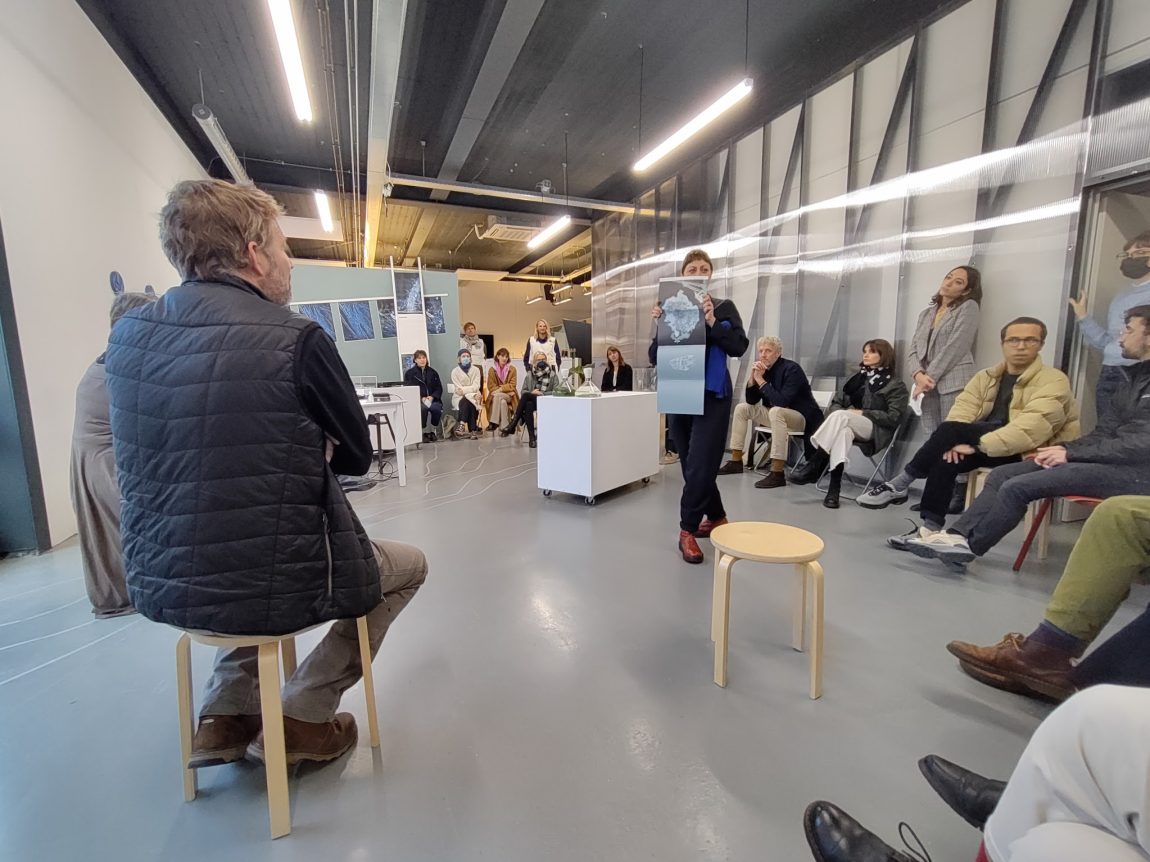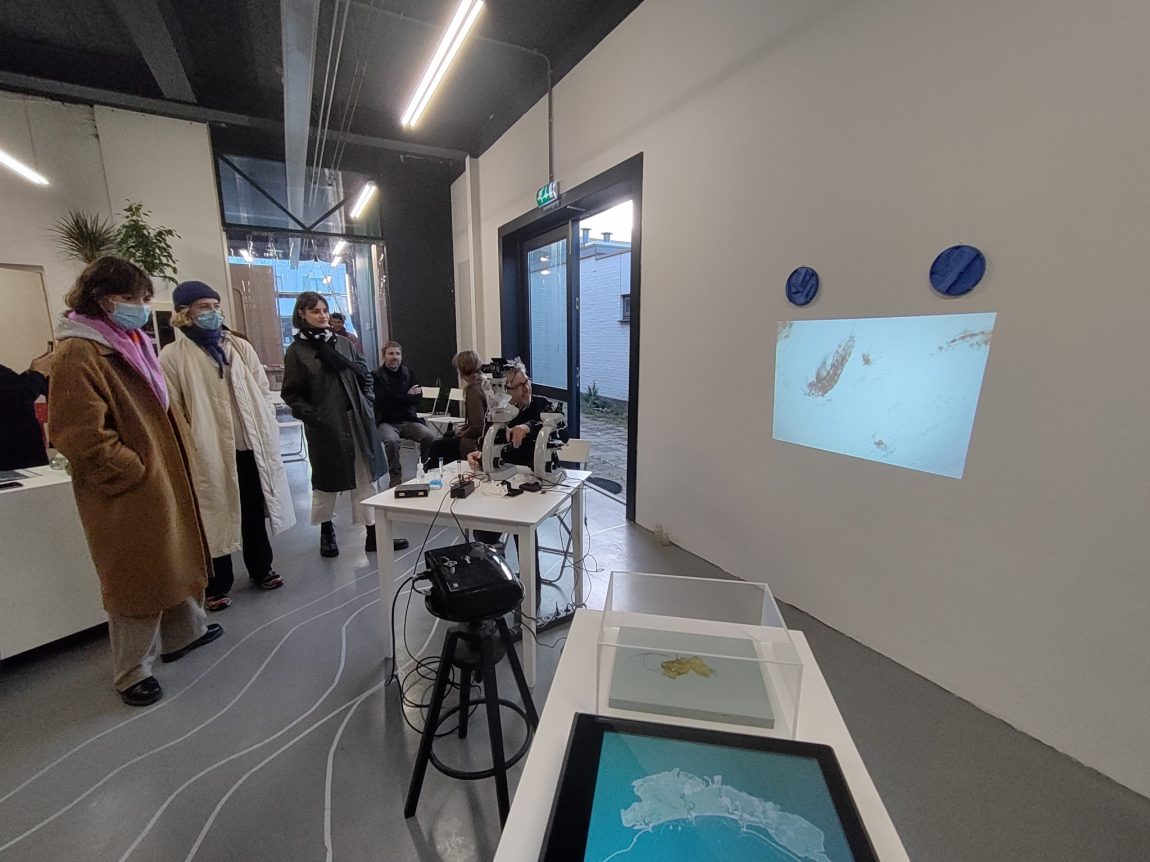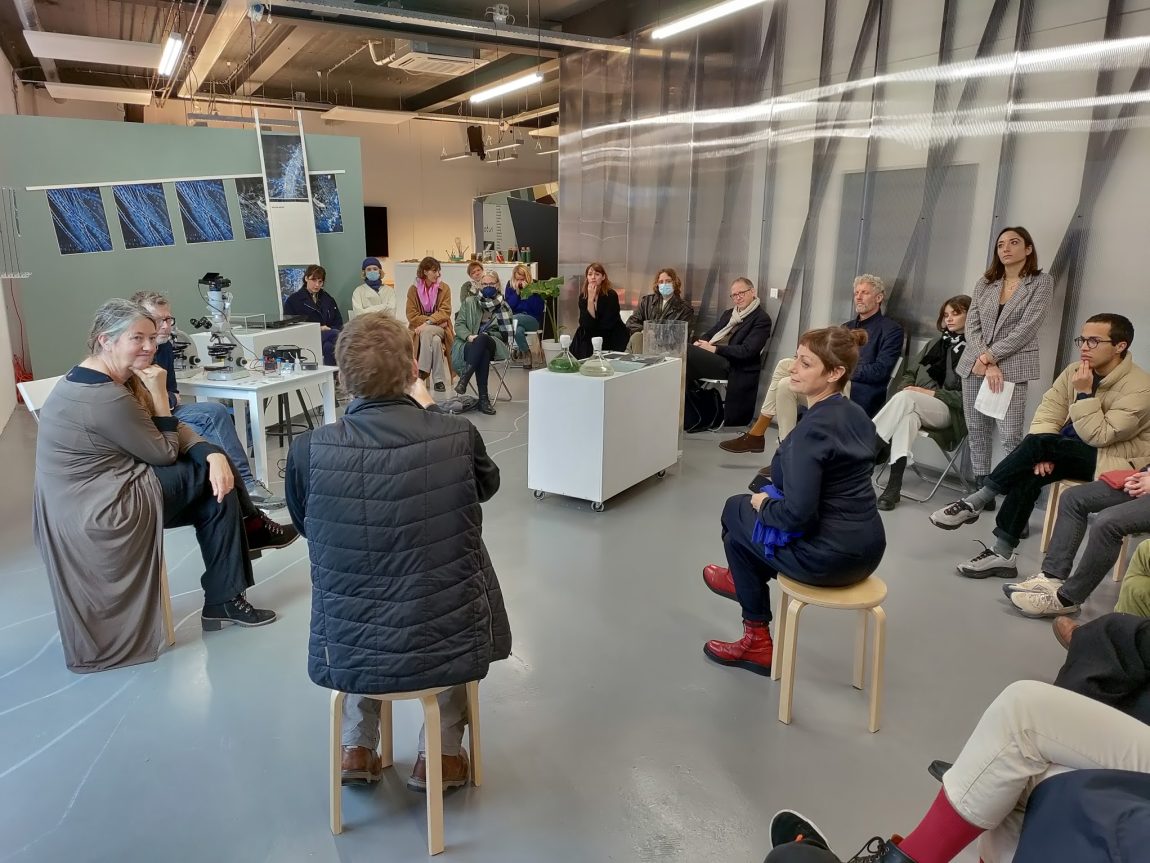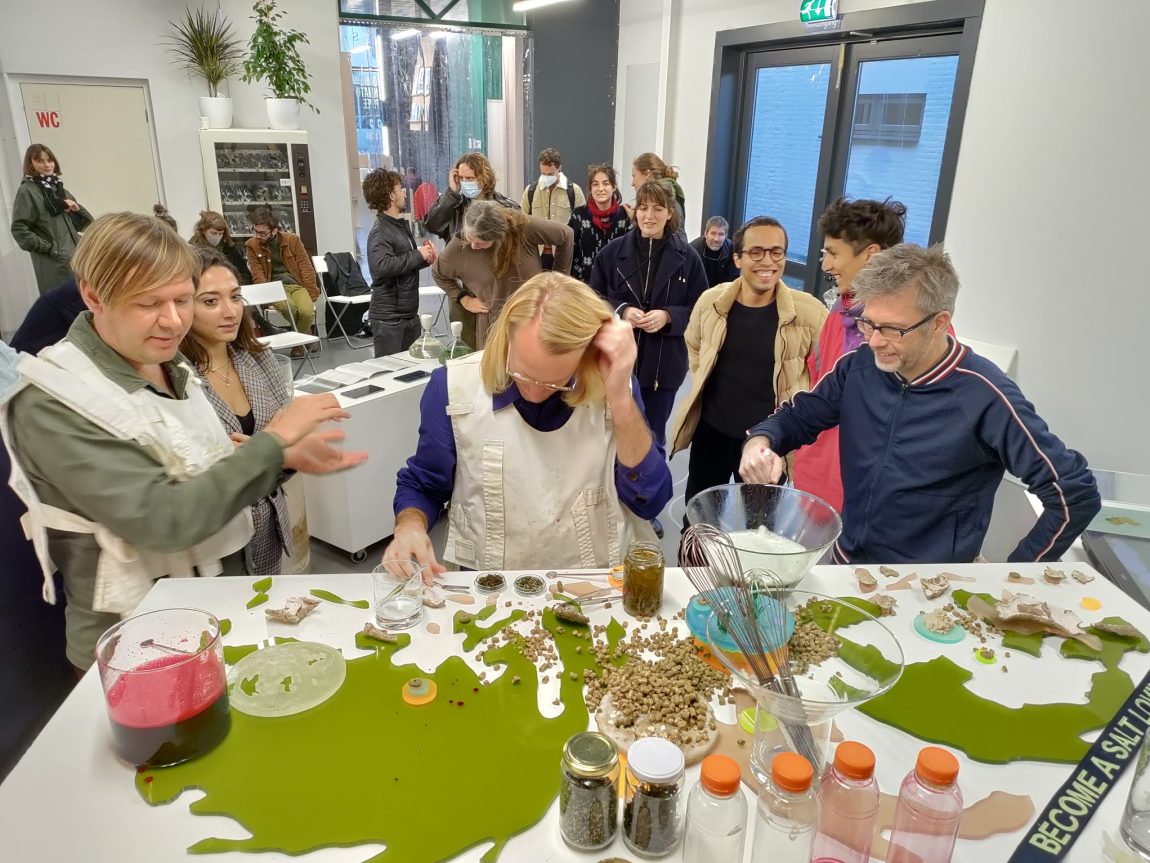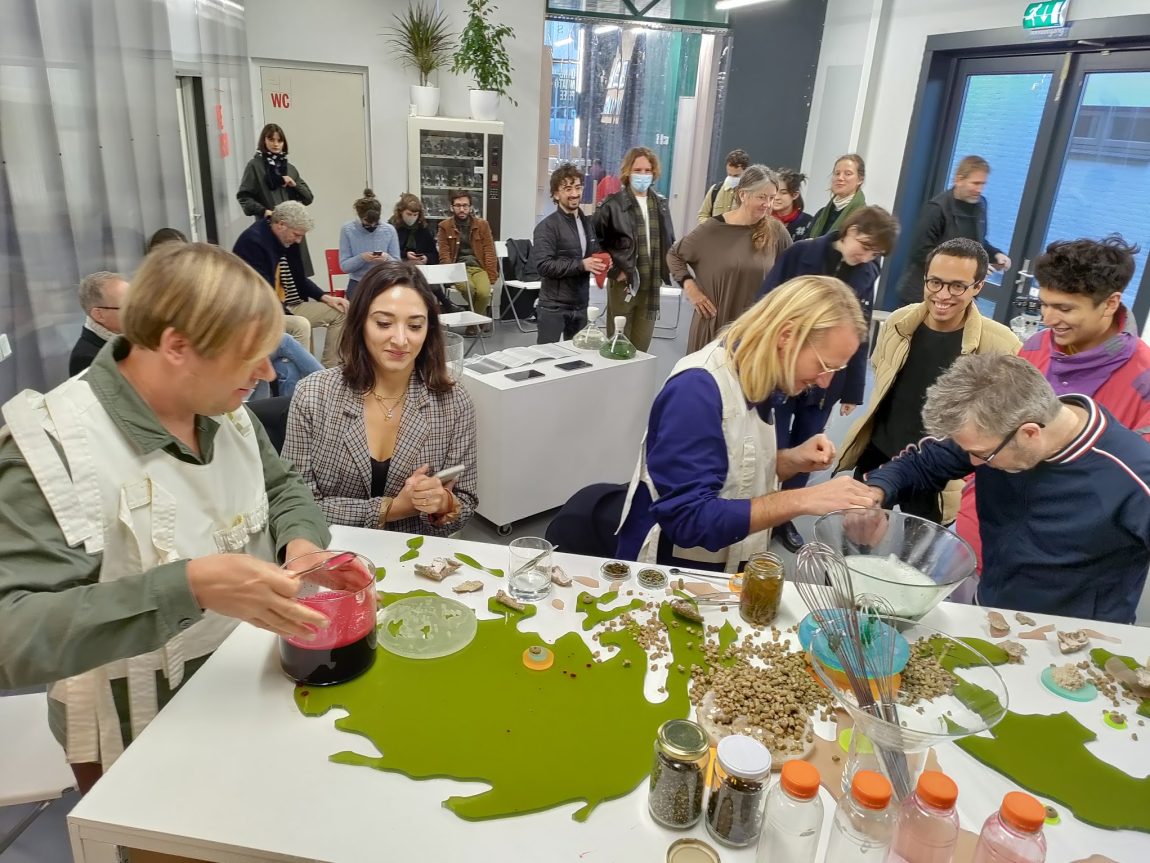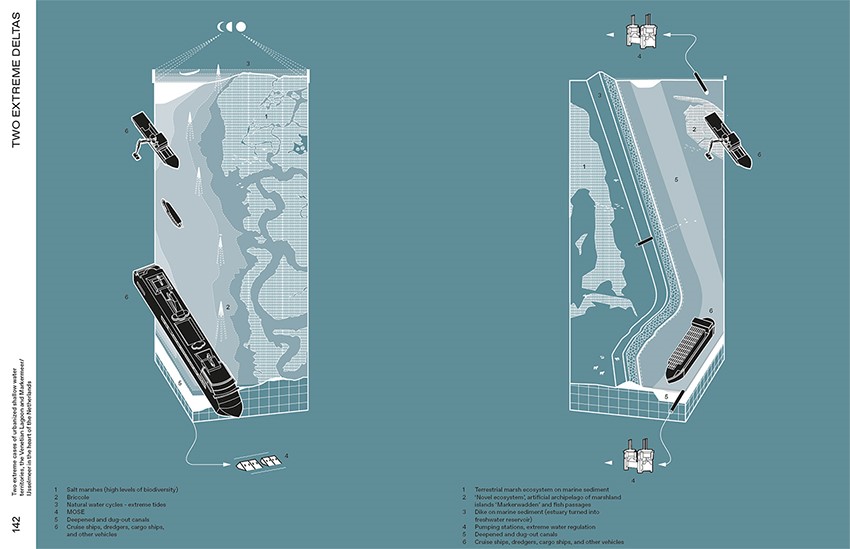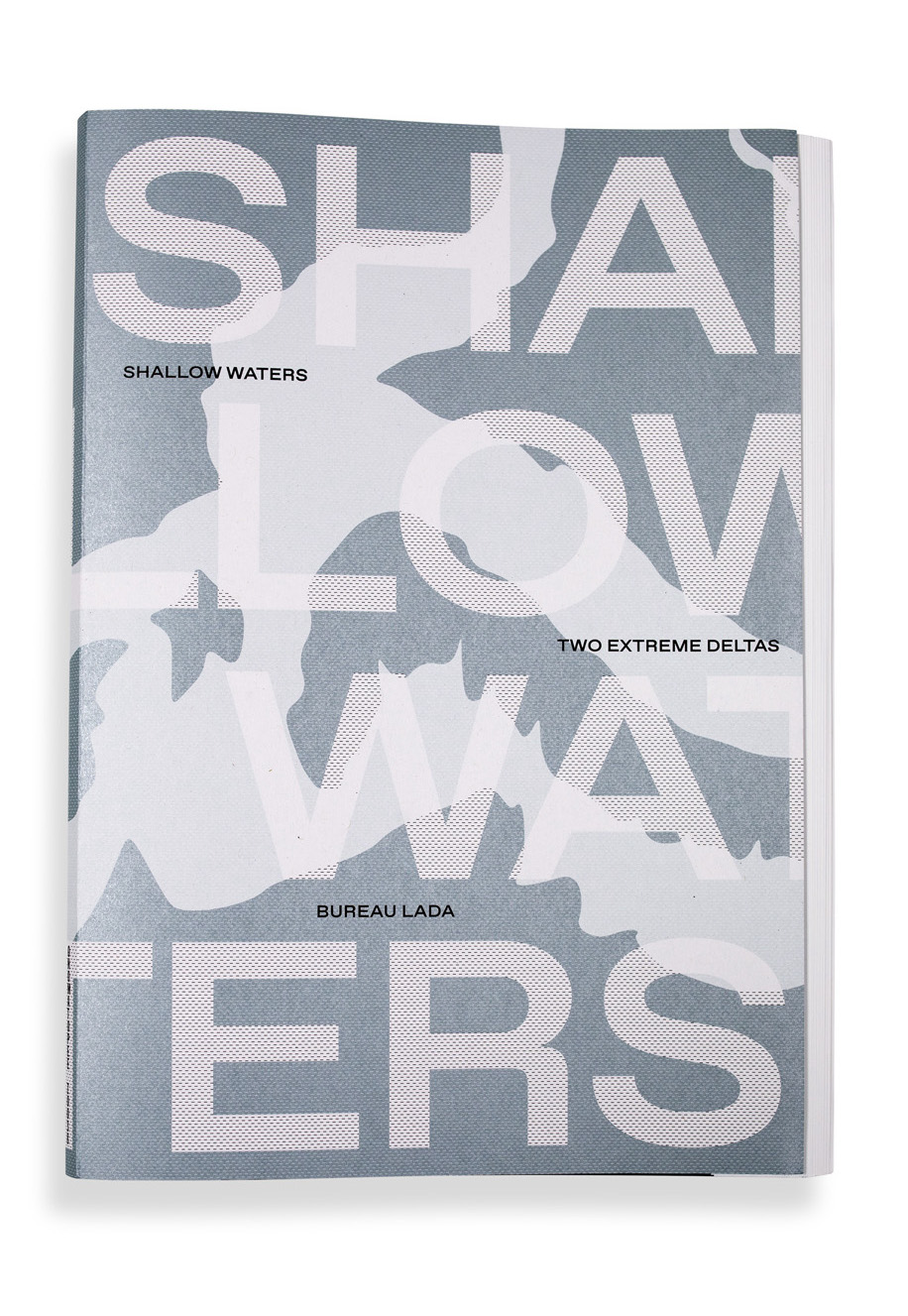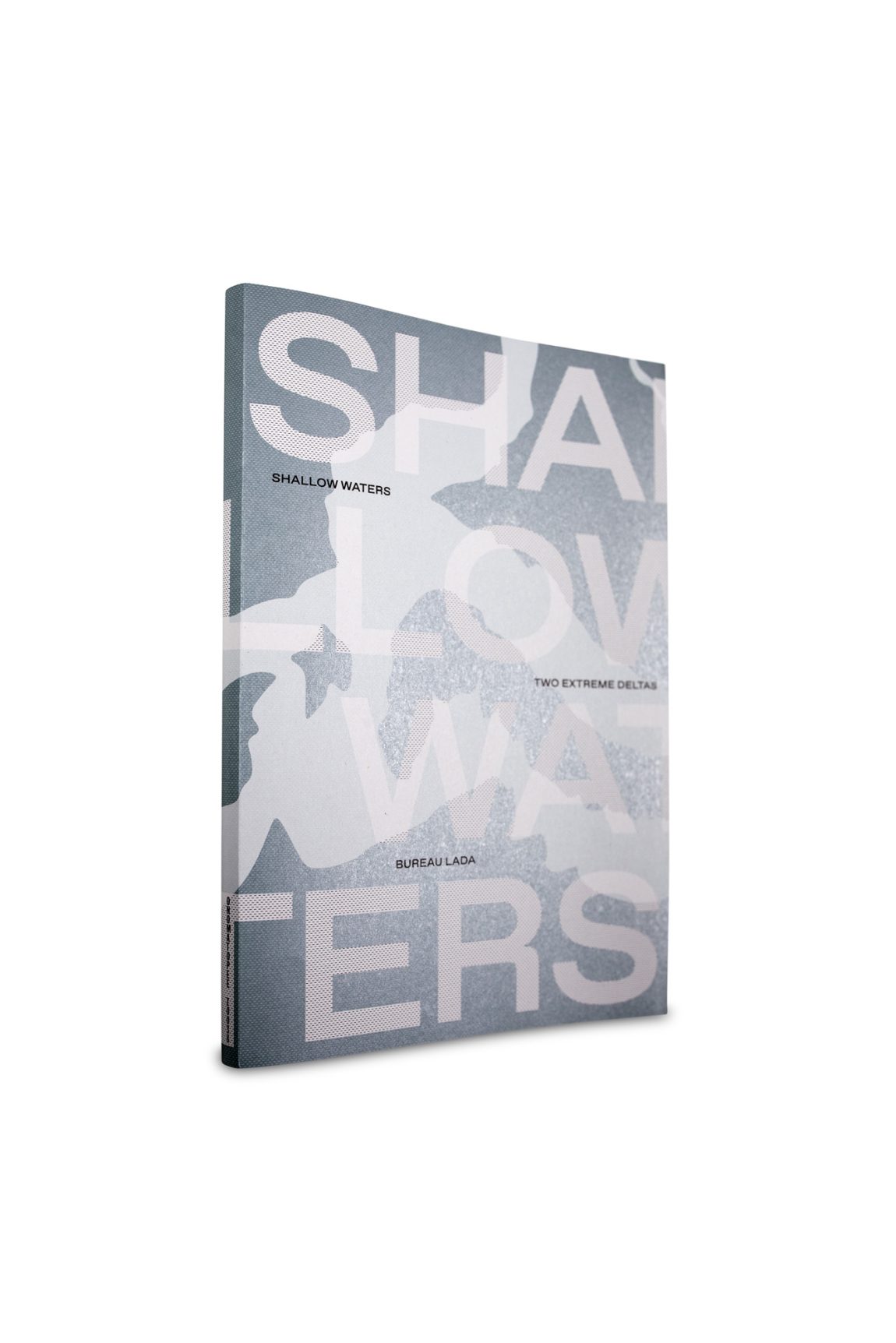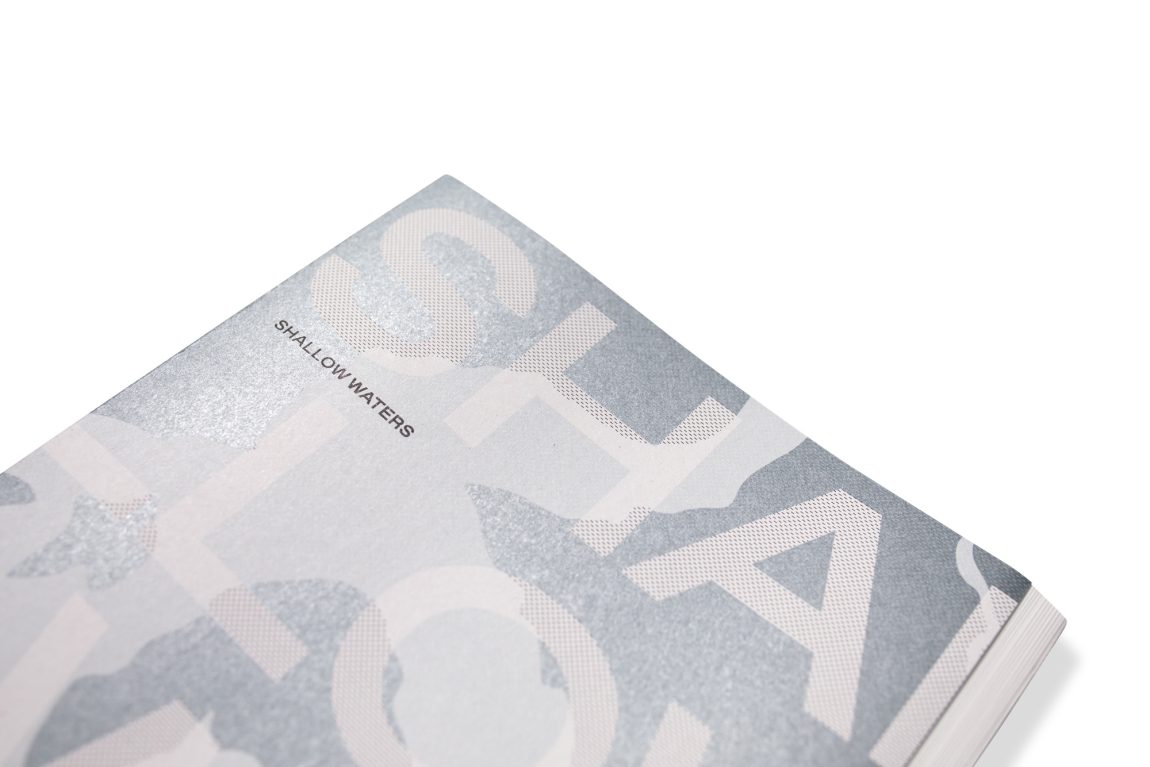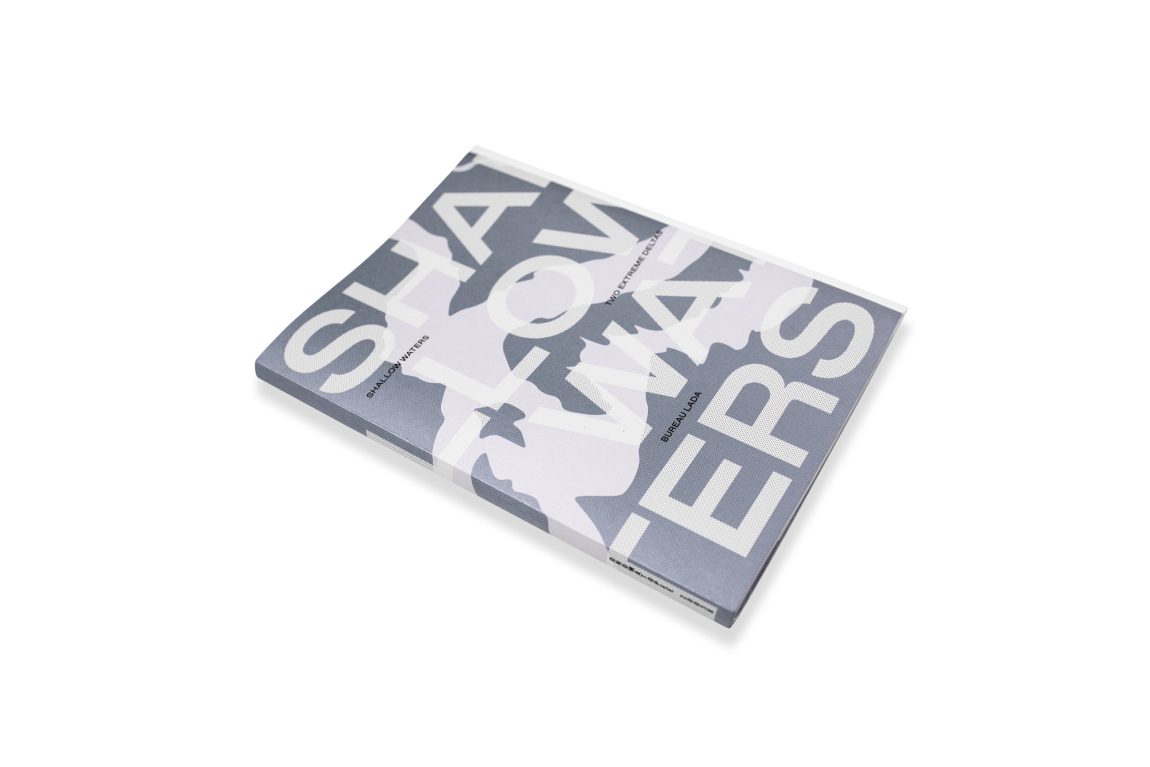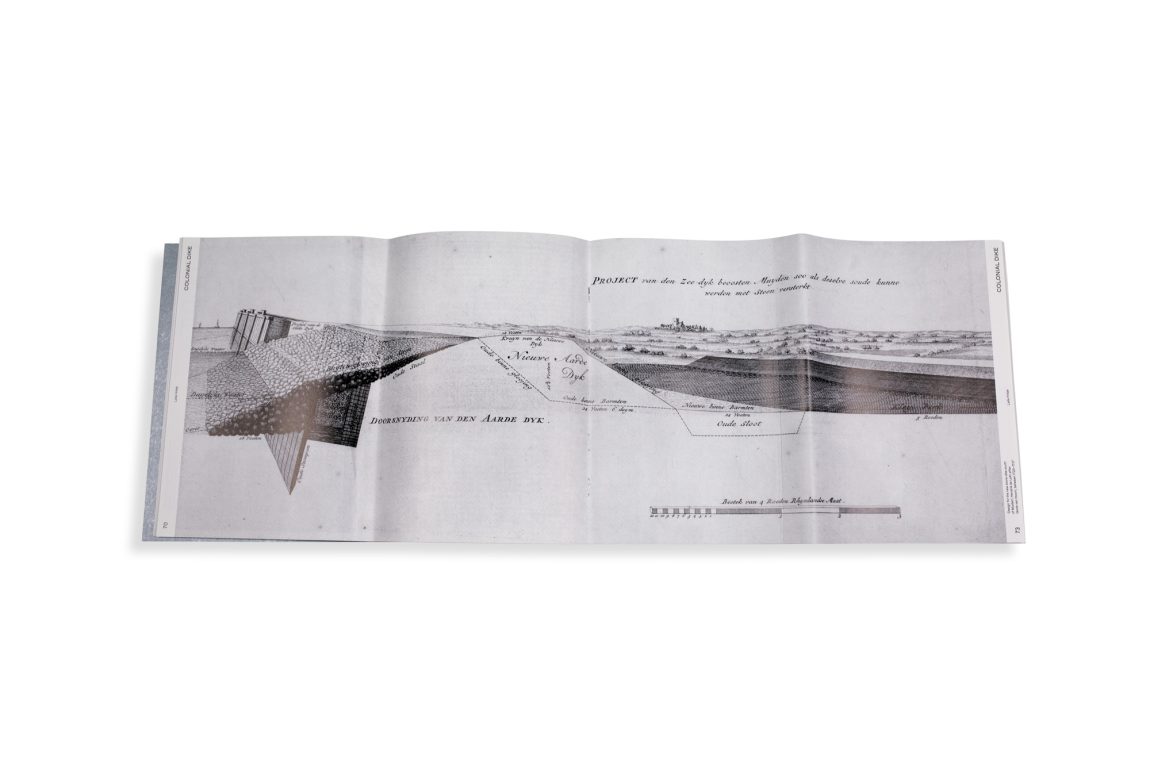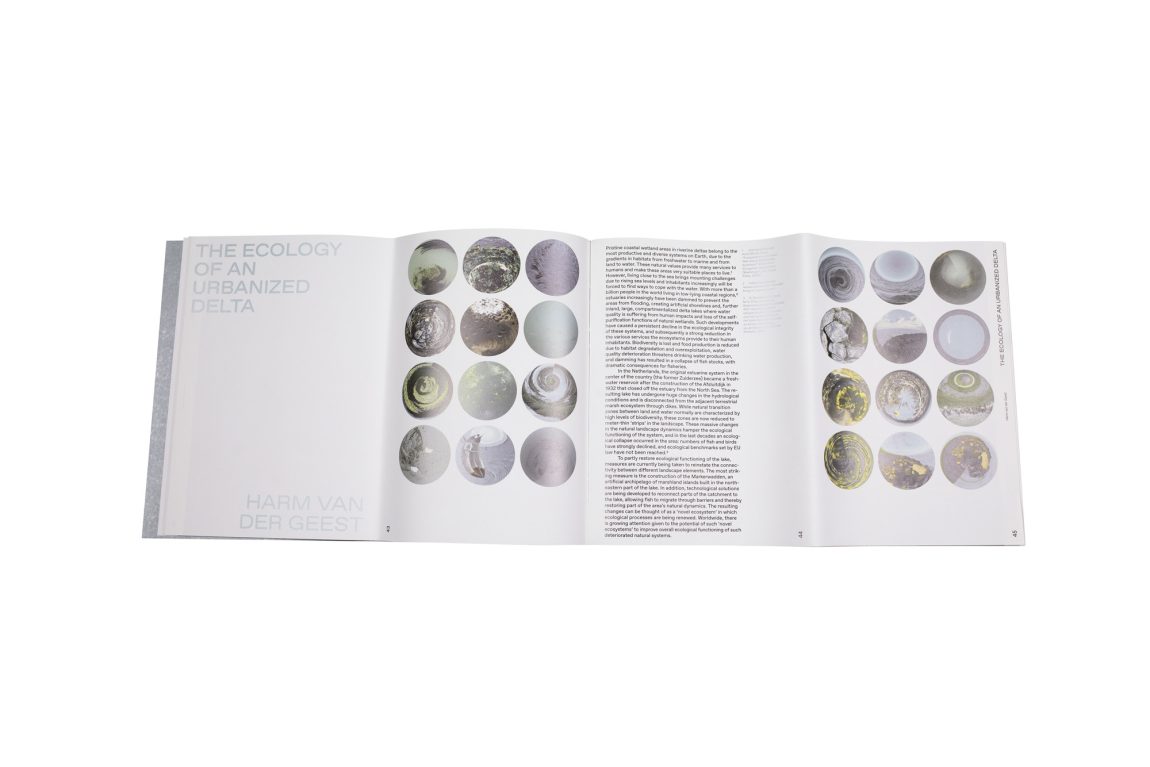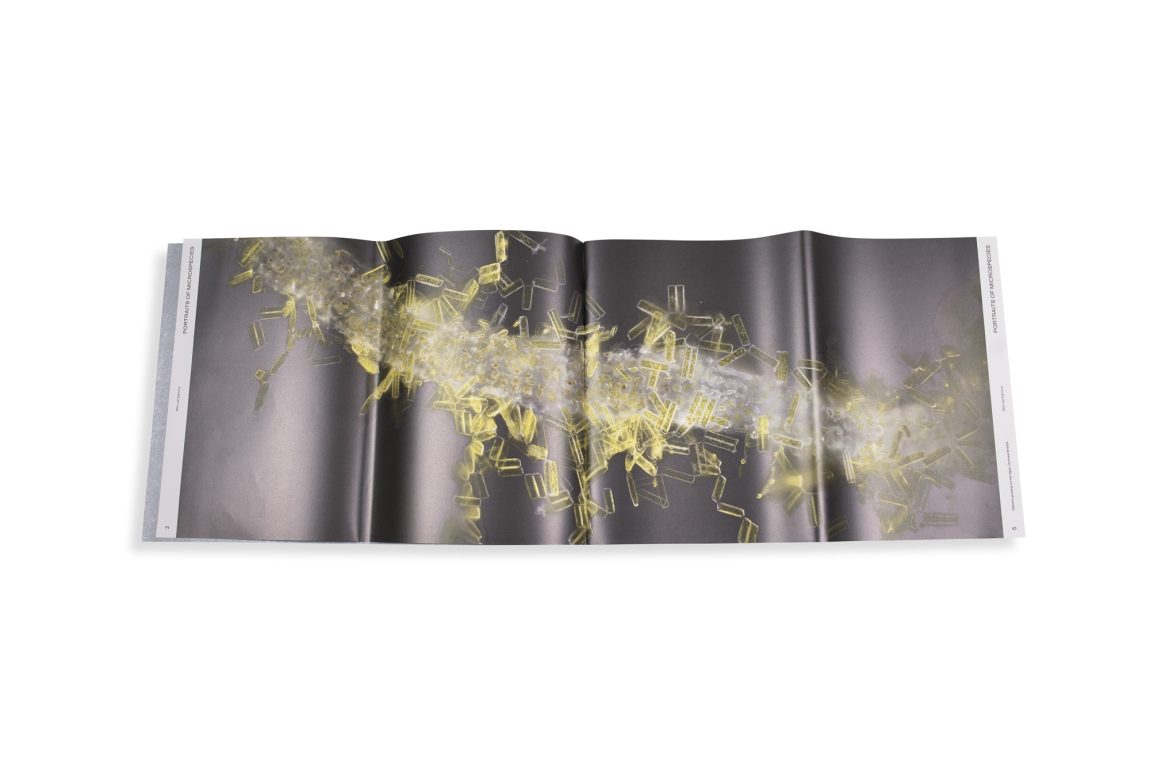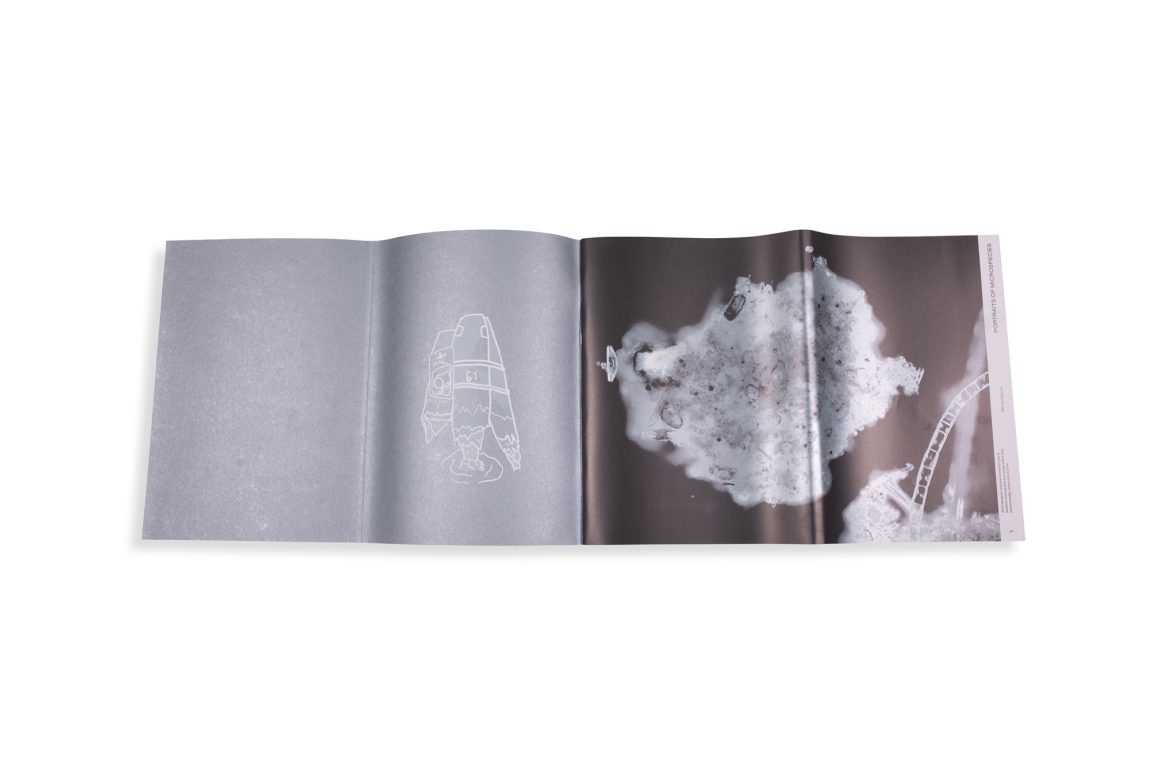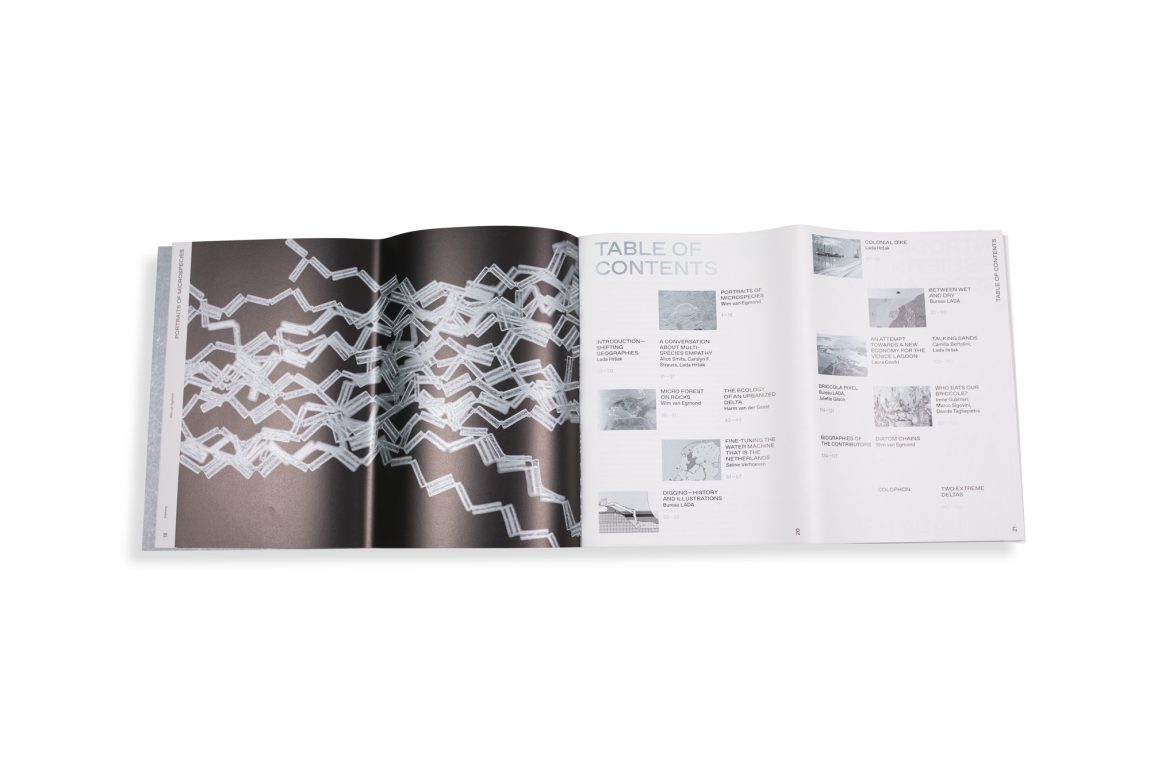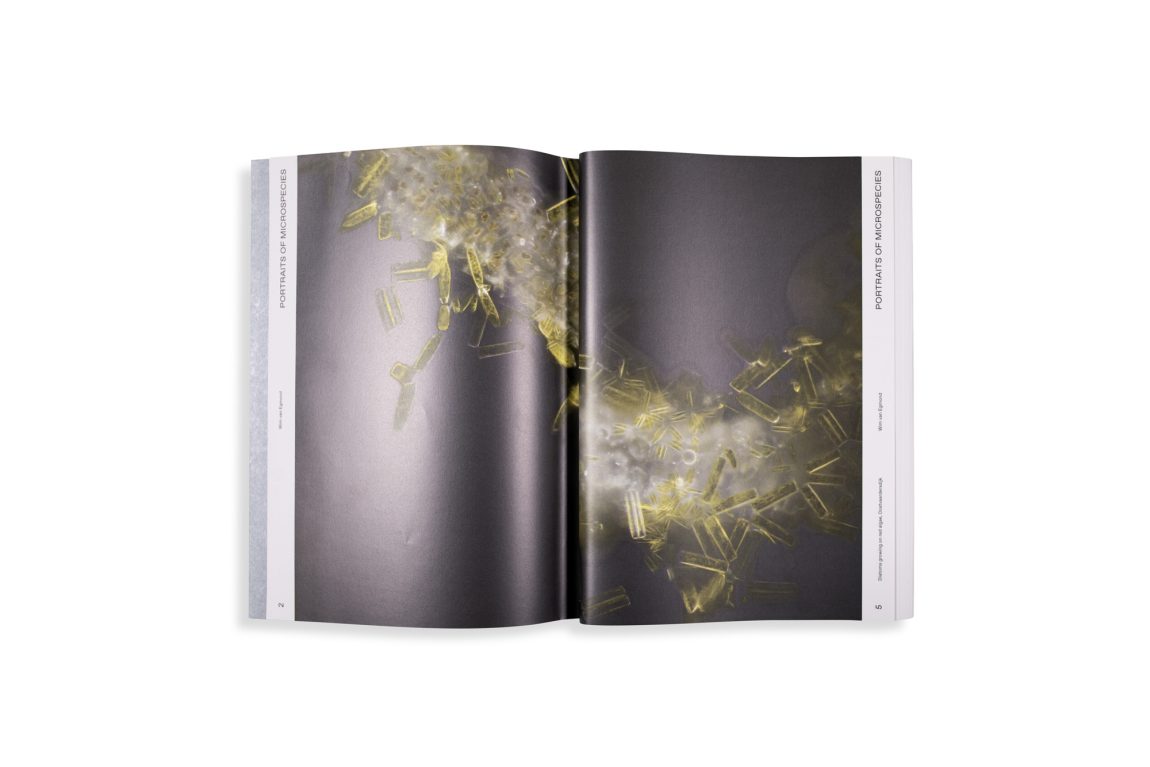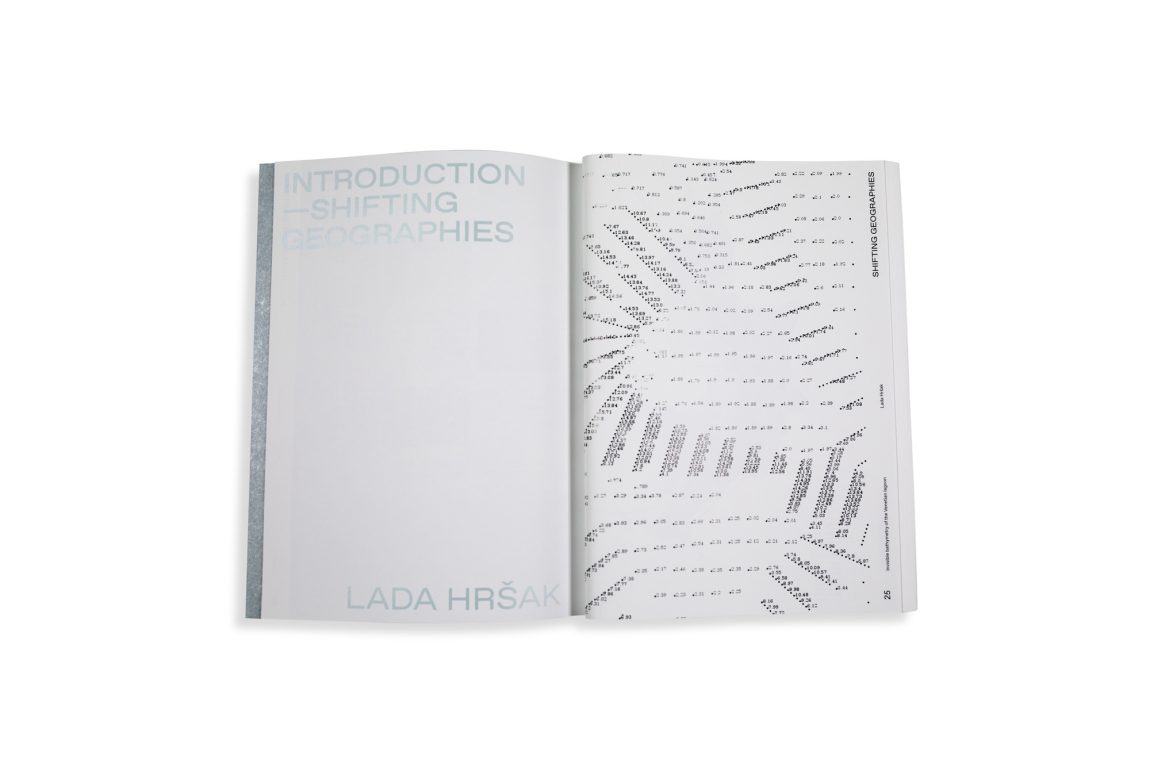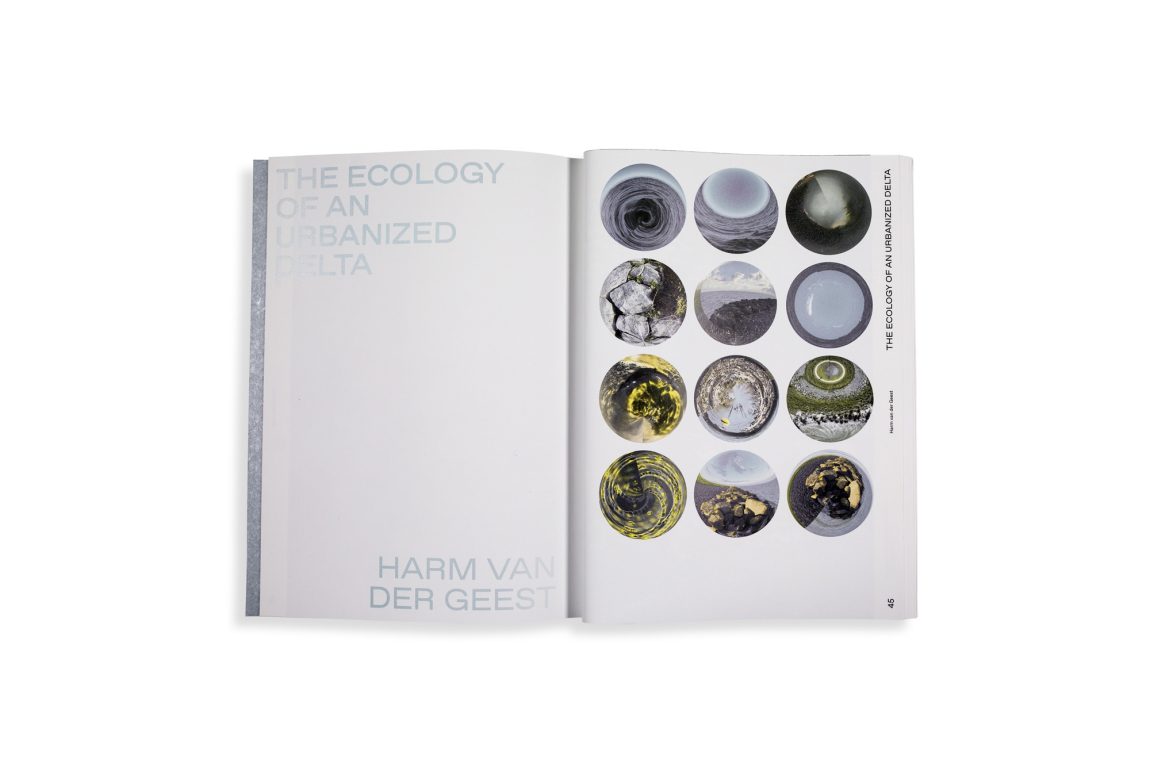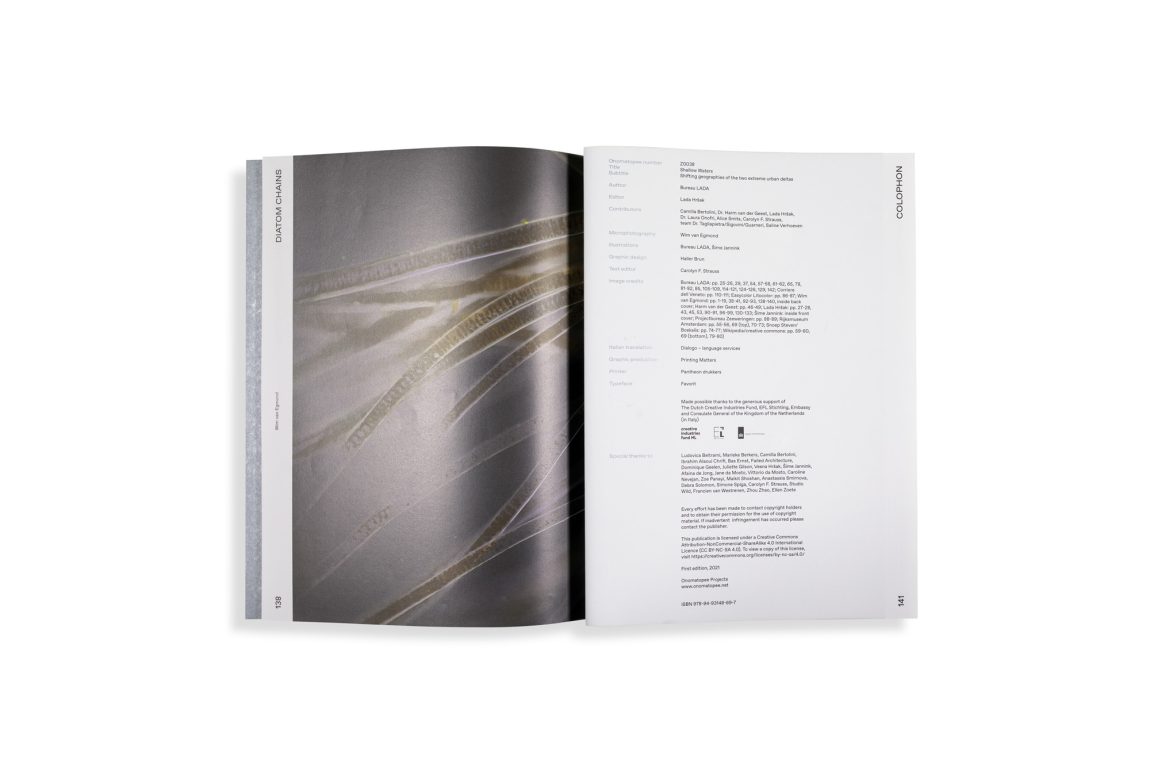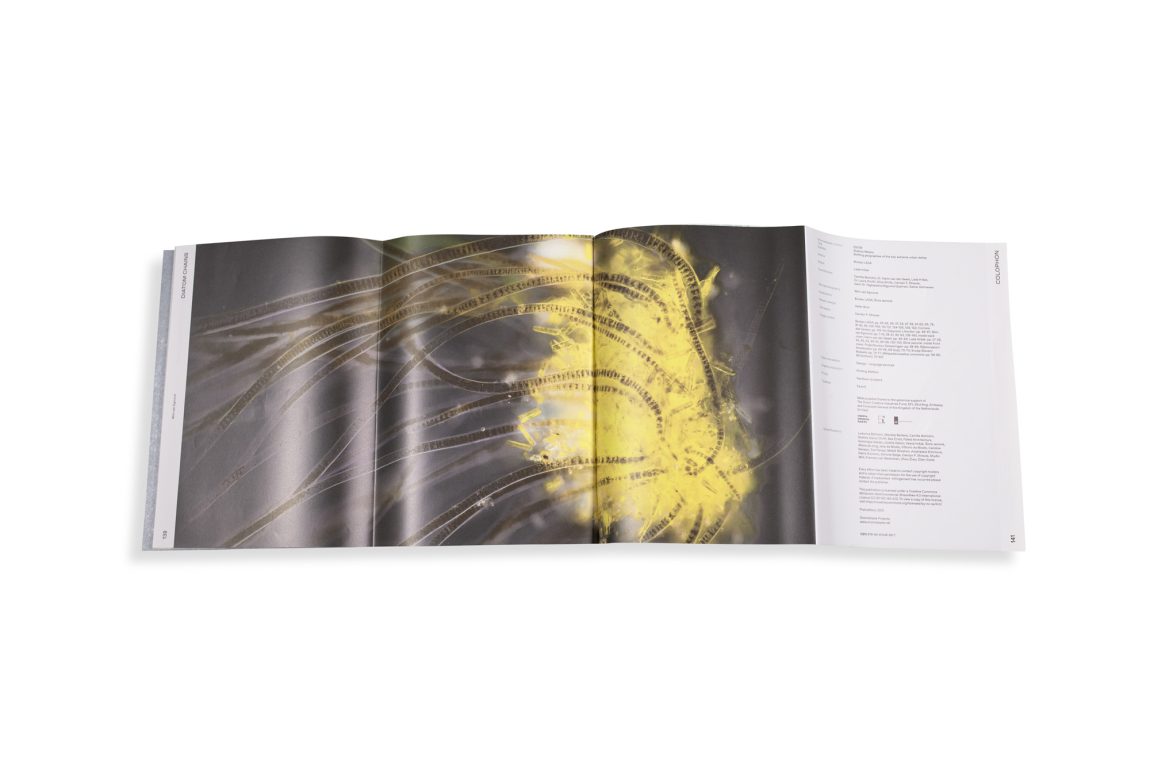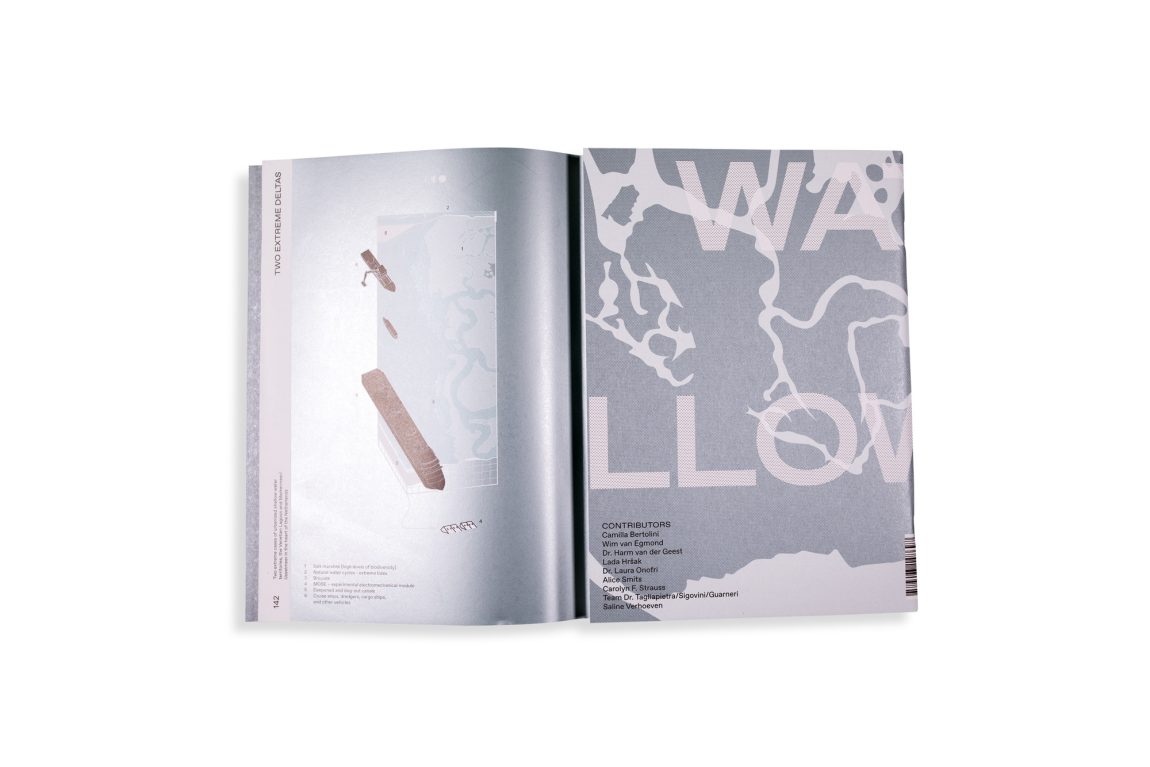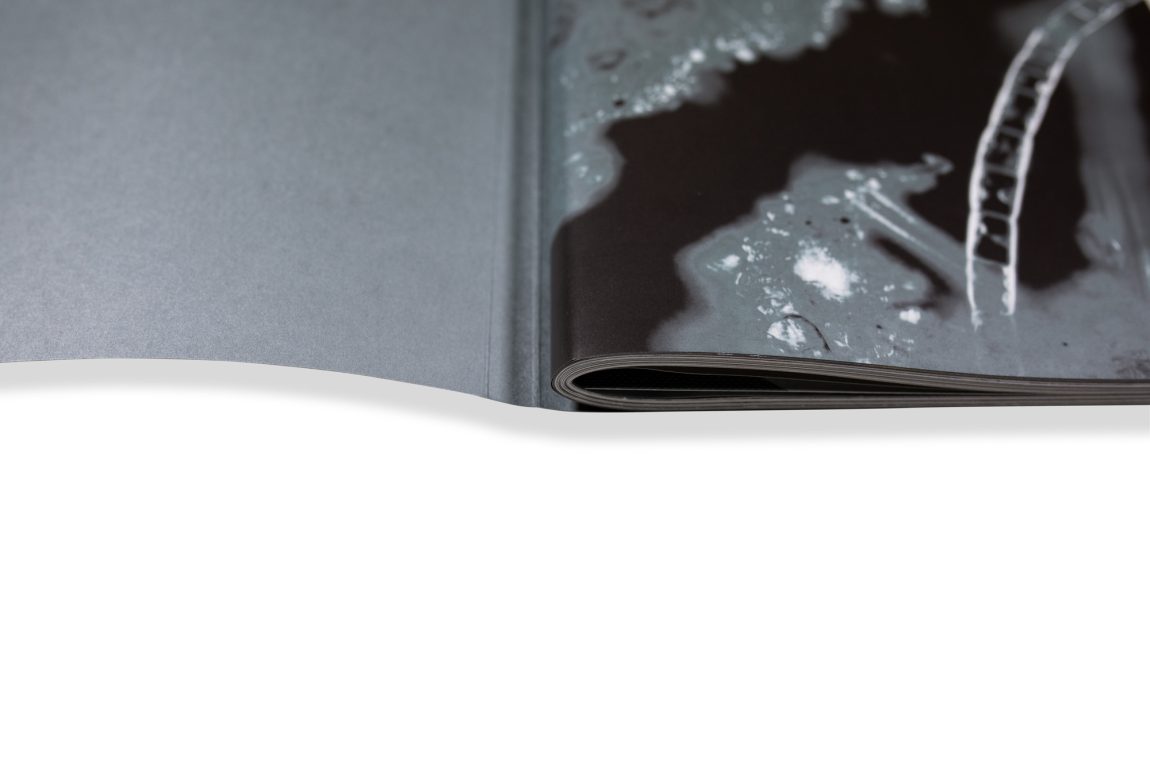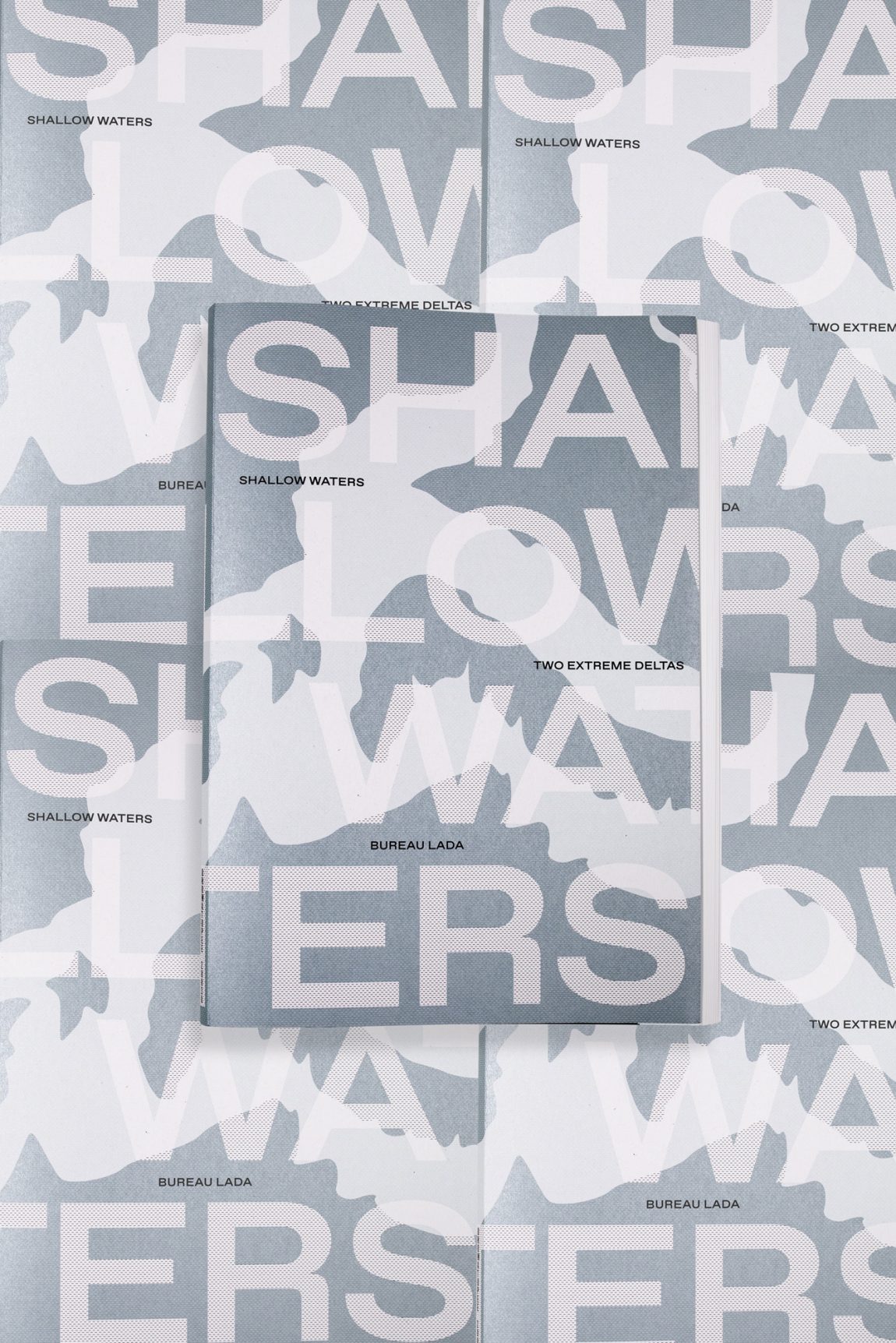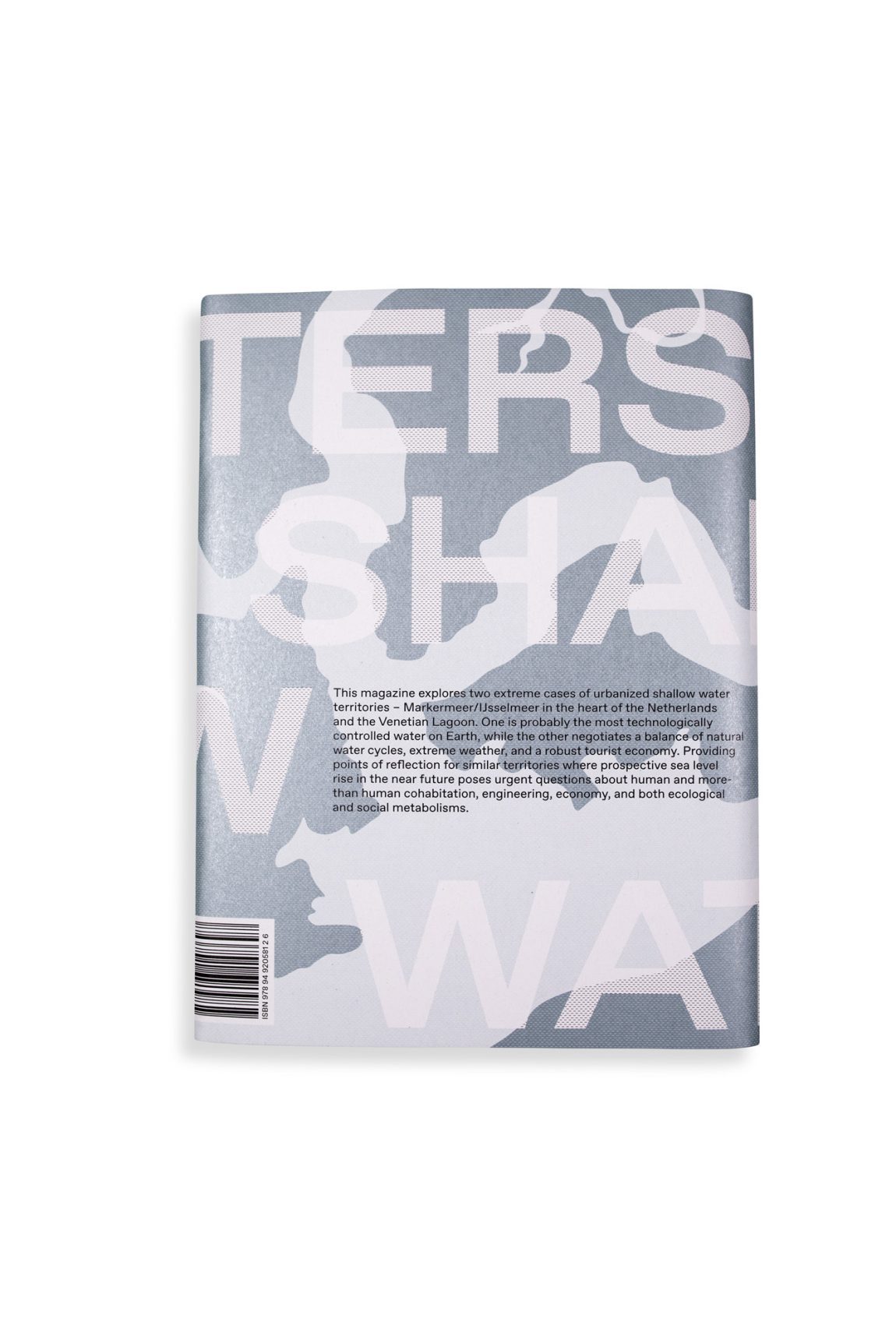Shallow Waters explores two extreme cases of urbanized shallow water territories – Markermeer/IJsselmeer in the heart of the Netherlands and the Venetian Lagoon. One is probably the most technologically controlled water on Earth, while the other negotiates a balance of natural water cycles, extreme weather, and a robust tourist economy. Providing points of reflection for similar territories where prospective sea level rise in the near future poses urgent questions about human and more-than-human cohabitation, engineering, economy, and both ecological and social metabolisms.
This presentation derives from the publication Shallow Waters, developed as part of the Parallel Program to the Dutch Pavilion on Venice Architectural Biennale 2021, designed by Haller Brun and supported by Dutch Creative Industries Fund, Het Nieuwe Instituut, and EFL Stichting.
Presented are objects, materials, images, and footage that have been part of the research and outcomes of the collaborative investigation of the two bodies of water: Markermeer/IJsselmeer in the Netherlands and the Venetian Lagoon.
On the floor, an impression of the coastal lines of the two locations is marked with a line of silver-tape, emphasizing the sharp contrast in shape between the human-made body of water in the Netherlands and the organically shaped one in Italy. On two tablets, footage of the Markermeer/IJsselmeer and the Venetian Lagoon is shown. The documentation of the lagoon shows an impression of the water movement and flows of the different water plants and seaweeds. The video from the Dutch water focuses on different microspecies encountered through the lens of Wim van Egmond. Microphotography of this field trip with Van Egmond to Diemerzeedijk and Oostvaardersdijk are printed with the Onomatopee riso printers Dymfy van Meel and Bureau LADA.
Two blue circular models, 'Fisheye Lab,’ depict speculative and possible relations between water-related species and habitats, or so-called ‘cohabitative utopias.’ The plaster models represent a 180m diameter round polder, containing various biotopes, batteries, laboratory, experimental ponds, residencies, and breeding ponds for current and future hybrid species.
On the television screen, the animation by Bureau LADA focuses on the technology and ecology of human-dominated geographies of the Dutch lakes.
Transparent tubes or Sediment cores with water samples have been collected by Dr. Harm van der Geest from Markermeer/IJsselmeer for his research as part of the Institute for Biodiversity and Ecosystem Dynamics at the University of Amsterdam. An archive of water layers of these lakes has been printed on plexiglass by Bureau LADA and depicts bathymetry, ecological, geological, cultural, flows, and invisible heritage layers.
This presentation invites a point of dialogue, exchange, and reflection in the long-term collaborative research process of Shallow Waters.

